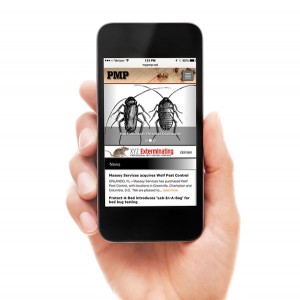Last issue’s Mobile PMP column examined marketing messages and privacy issues. This time, we’ll take a look at how you can target the customers who need your services. We’ll also explore why you should consider investing in a modern-looking mobile platform.
Know your audience
Marketing, particularly mobile marketing, is useless unless it’s reaching the right people. Be mindful of how folks on the receiving end of your mobile marketing message obtain and interact with that message.
One tactic many companies employ is developing “customer personas” — that is, they take a close look at their customer base and draw up a composite profile based on what they know about customers. For example, “Jennifer” is a 35-year-old, stay-at-home married mother of three, who is college educated and relies on the Internet for researching pesticides and their potential effect on families and pets.
When piecing together a customer persona, consider the types of technology your clients use, how technologically savvy they are, and their general preferences based on your past experience serving them. Add as much detail as you believe could be helpful: What are their likes and dislikes, their income level, where do they live? The more you know about your customers, the better able you will be to engage them in meaningful ways for interaction and sales. Consider taking a customer survey to obtain this information, but make sure participants are rewarded for their time.
Also, don’t be afraid to have your service technicians ask customers — without being too obtrusive — about their technology preferences, such as what smartphones they use and how they prefer to receive correspondence from your company about special deals or customer appreciation perks.
Likewise, it doesn’t hurt to create a potential customer persona — one that helps you identify people your mobile marketing fails to reach. What type of people do you think could become customers if only you could connect with them? Both types of personas help you focus your mobile marketing for optimal effect.
Know your technology
Do you have an information technology (IT) department, or at least a go-to IT person? It helps to have one. But if you do not, don’t despair. It’s not necessary to become a technological whiz, but knowing the basics will make mobile marketing far less scary.
Think about how your other technological platforms mesh with your mobile marketing. Consider your website’s screen resolution, for example. How does your company’s site look on a smartphone browser? If you’re dissatisfied with your mobile aesthetic, it’s likely your customer is, too. Who developed your website, and does that same person have what it takes to optimize your online presence for mobile technology? If not, consider hiring an IT consultant who can offer an assist.
If your site looks like it was built on a GeoCities template in 2005, the behind-the-times appearance will negatively influence customers looking for state-of-the-art pest management professionals (PMPs) who are up to date and in the know about technology and pest management. Bottom line: A sloppy platform for your company sends a self-defeating message to the customers who are shopping around for a PMP.
Context is everything
It wouldn’t kill ya to do a little research. It doesn’t take that much time to track down online up-to-date statistics about mobile marketing. One of the most important concepts you might glean from this kind of research is where, why and when most people use their mobile devices, and for how long. For example, would you be surprised to learn 75 percent of people use their smartphones on the toilet? (Source: 11mark.com/IT-in-the-Toilet)
Perhaps it’s difficult to decide exactly how that particular statistic is helpful, but once you scratch beneath the surface of similar stats, a bigger picture of the country’s mobile habits begins to come together. And once you have a better understanding of what the rest of the country is doing, you can fine-tune your message, develop the appropriate mobile tactics, and employ the proper tools to help you reach your company’s goals and resonate with your audience.

Leave A Comment